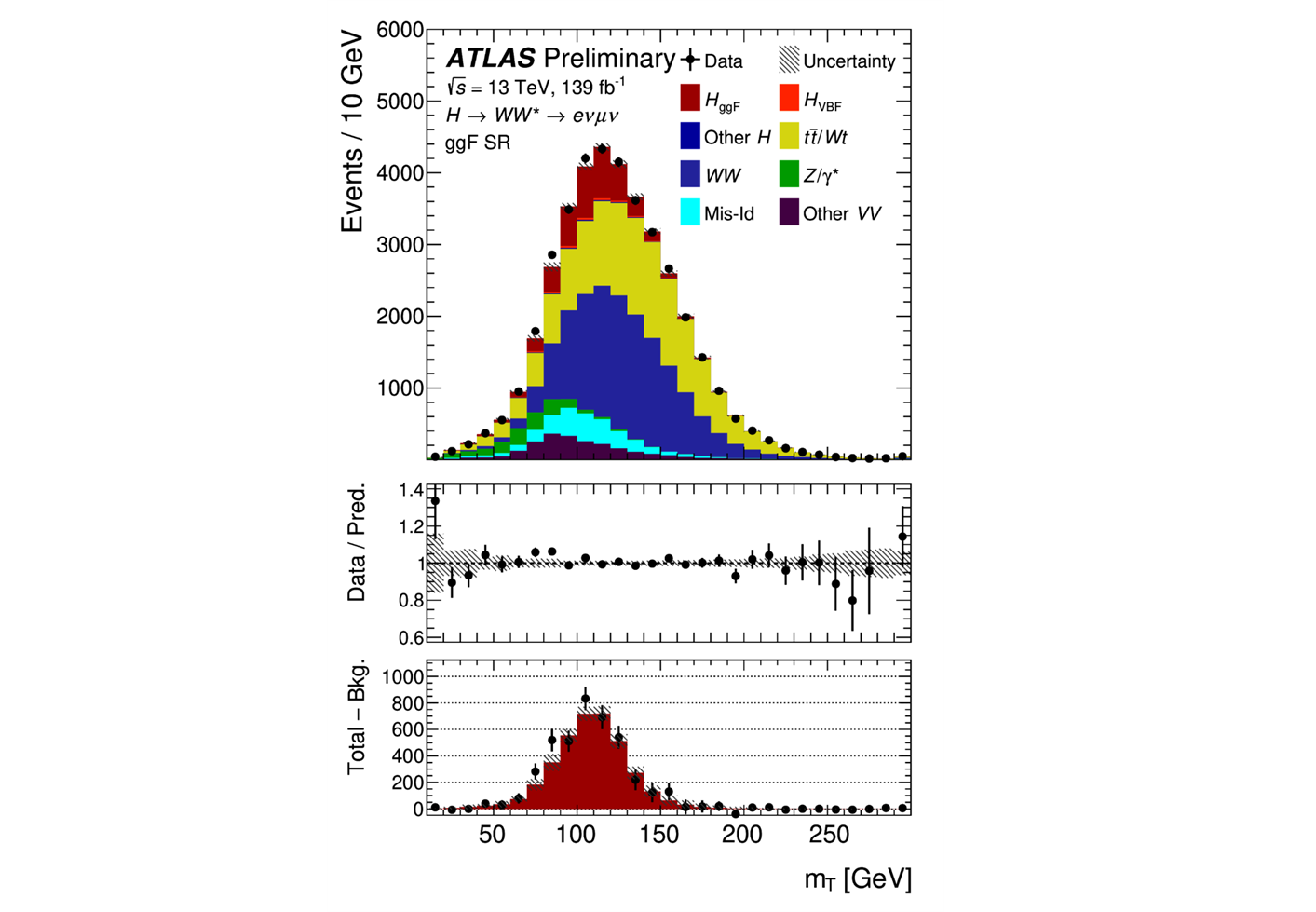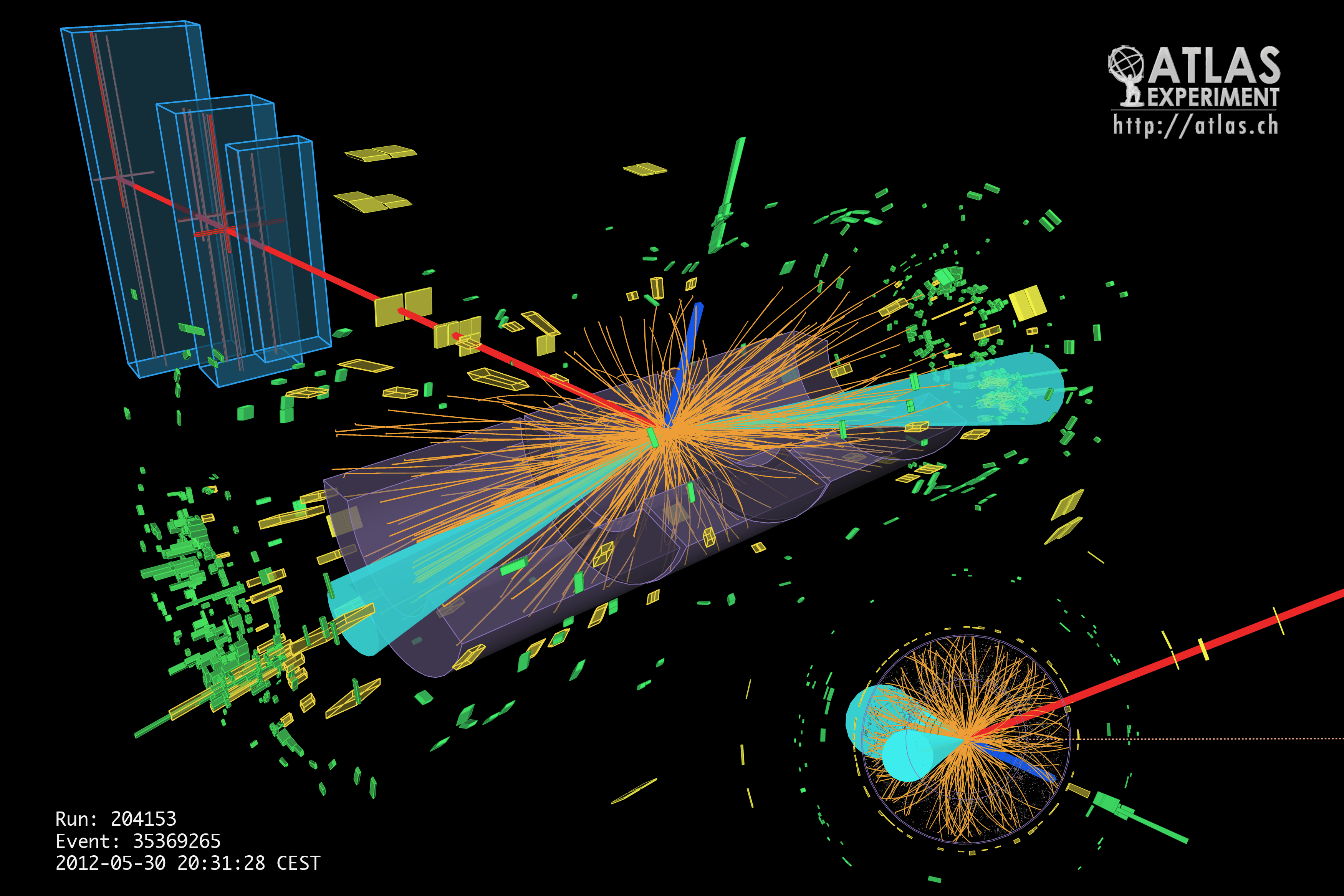After the Higgs boson was discovered in 2012, a tremendous amount of research commenced to measure its properties. Physicists around the world began investigating whether the Higgs mechanism was realised in nature as predicted in its totality by the Standard Model of particle physics [1].
One of the leading Higgs boson research groups was located at the University of Toronto Department of Physics. In the summer of 2013, I was granted a research internship there to work with Dr. Peter Krieger and the Experimental High Energy Physics group. Specifically, I was tasked with producing a simulation of one of the modes of production of the Higgs boson (H -> WW* bosons) and comparing that simulation against experimental data from the Large Hadron Collider.
Below I have provided a brief background on the Higgs Boson and an overview of my research.
Background on the Higgs Boson
The Higgs boson is a linchpin to the Standard Model of particle physics, a theory that describes fundamental particles and their interactions. The Standard Model encapsulates our best understanding of nature at its smallest scale [3]. According to the theory, the Higgs boson is critical to explaining how particles have mass.
The Higgs boson was so elusive because of its instability. A Higgs boson can only be observed from the particles into which it decays. These particles can include photons, Z bosons, W bosons, leptons (e.g. electrons) and bottom quarks. Each process of decay is called a ‘production channel’ which comes with its own unique set of strengths and challenges. All are crucial in understanding the behavior of the Higgs boson and by extension the Standard Model [4]. As a result, even after the Higgs boson was discovered with certainty, its vast array of production channels needed to be investigated exhaustively.
Investigation of the Higgs boson and its production channels is performed, in a simple sense, by comparing two sets of data: experimental and simulated. In the case of the Higgs boson, the experimental data was captured from the ATLAS detector at the Large Hadron Collider and the simulated data was generated by predicting background noise from the detector without the assumption of the Higgs boson. The existence of the Higgs boson was discovered by proving that the experimental data differed from the predicted simulation data by a statistically significant margin. Figure 2 below is an example of select data events from a Higgs boson production channel (for illustrative purposes).
Research
The purpose of my research was to simulate a challenging and rare Higgs production channel: a Higgs boson and a Z boson decaying into four leptons. This production channel is represented in symbolic form as ZH -> WWW* -> lllvlv and shown with the diagram below.

Figure 1: Feynman diagram of the ZH -> WWW* -> lllvlv production channel
My simulation of the Higgs boson production channel was built upon fundamental physics equations and used the Monte Carlo technique to represent variability in the experimental results. One of the primary challenges with simulating this production mode was the presence of so-called ‘jets’, streams of particles from the fragmentation of quarks or gluons. An occurrence of ‘jets’ is extremely rare but its simulation is still important for accuracy and statistical significance. Due to the low predicted rate of jet production, compute power and time is a limiting factor for its simulation. For reference, A Monte Carlo simulation that takes several days to run may only produce 1 jet event from the ZH -> WWW* -> lllvlv production channel which is not practical for conducting statistically significant analysis.
My biggest achievement from the summer was to improve the jets simulation, as part of the ZH -> WWW* -> lllvlv production channel, to produce a statistically significant result. The solution, in brief, was to use data for a more common production channel of jets (Z+jets -> 3 leptons) and estimate the rate at which a 4th lepton could be misclassified as a jet (hence -> 4 leptons). This technique allowed for an accurate and statistically significant estimate of the occurrence of jets -> 4 leptons, using a reasonable amount of computational time.
The end result of my summer research was increased confidence in an important Higgs boson production channel and ability to analyse its behaviors. Although the results of my research were not published, they were similar in appearance to Figure 2 below. I am grateful to Dr. Peter Krieger and the University of Toronto for giving me an opportunity to assist with their research during an exciting time in physics.

Figure 2: Selected data events for the Higgs ggF production channel are compared to predictions as a function of transverse mass of the Higgs boson. The Higgs boson signal is shown in red over the background of mainly top quark (yellow) and WW (violet) production. The middle panel shows the ratio of data to the sum of all simulations, whilst the bottom panel compares the data to the sum of all predictions [5].
References
[1] https://atlas.cern/updates/briefing/Higgs-boson-W-boson
[2] https://www.physics.utoronto.ca/~krieger/
[3] https://www.quantamagazine.org/a-new-map-of-the-standard-model-of-particle-physics-20201022/
[4] https://cms.cern/news/measuring-higgs-boson-decay-ww-90-physics-other-half-teamwork


